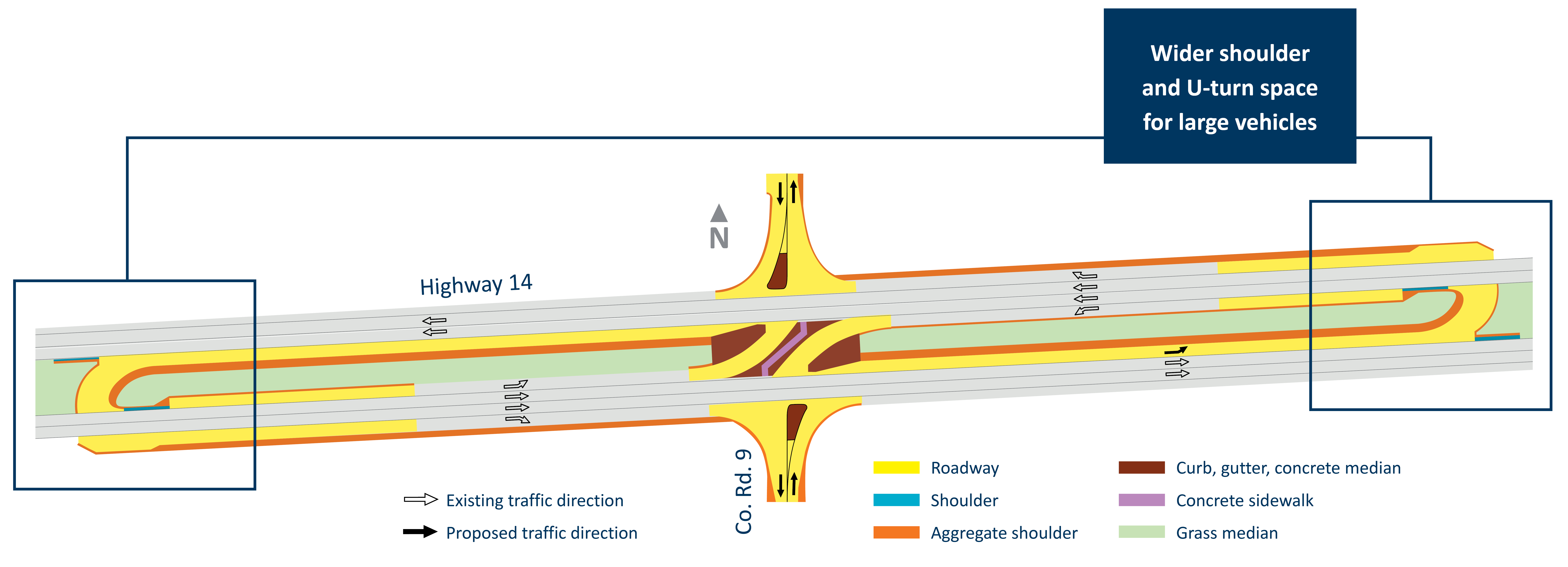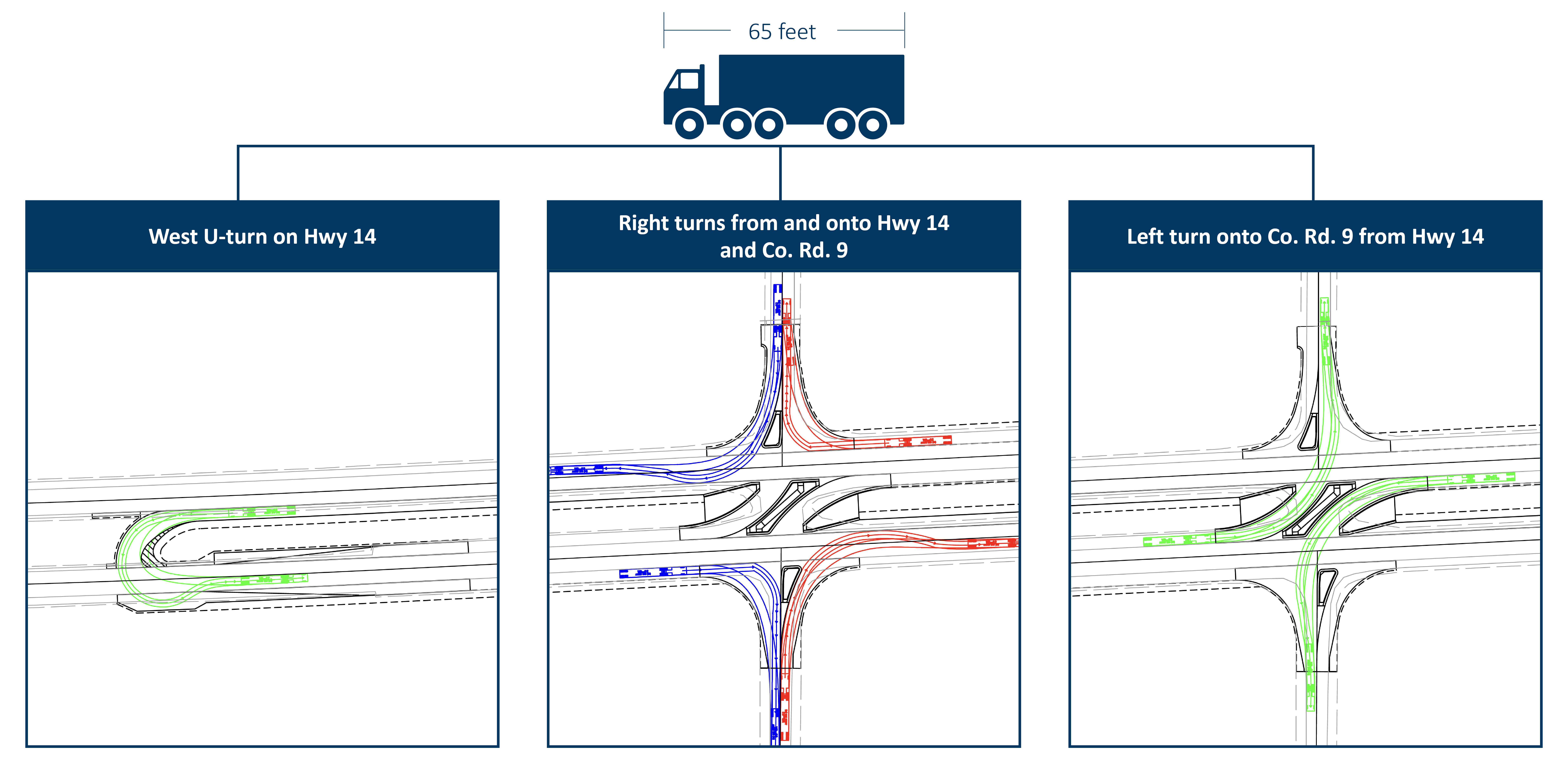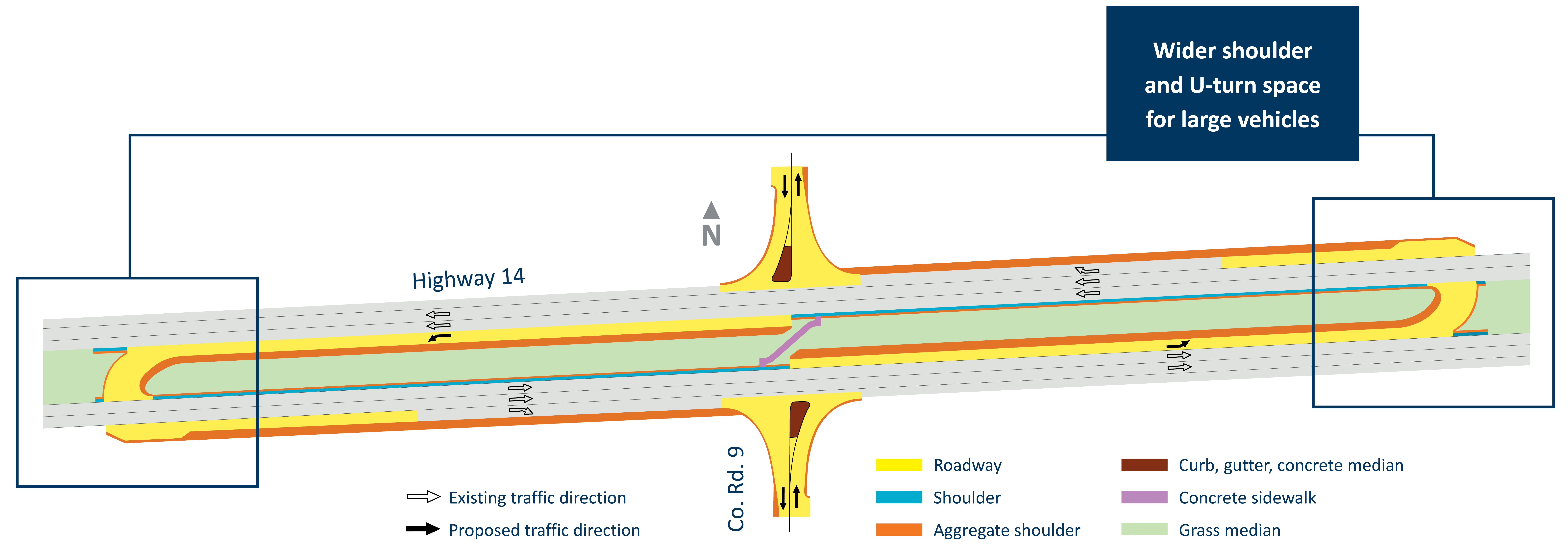Public Meeting Materials, September 2022

We presented these materials at a public meeting on September 20, 2022. People were asked to review then and participate in a survey. The survey has since closed.
Crashes
In the past ten years, there have been 18 crashes at County Road 9
Among the 18 crashes:
- Three were north of Highway 14 at the railroad crossing
- Three were run off the road, not specific to the intersection
Crossing or turning left across oncoming traffic is the number one risk at intersections like Highway 14 and County Road 9. This type of crossing has more conflict points, which leads to more frequent and severe crashes.
Reduced conflict intersection
What is an RCI?
Reduced Conflict Intersections (RCIs) are intersections that decrease fatalities and injuries. With an RCI, drivers from the side street only have to be concerned with one direction of traffic on the highway at a time. You don't need to wait for a gap in both directions to cross a major road.
What are the benefits?
Improved safety: Studies show an 86 percent reduction in fatalities and a 46 percent reduction in injury crashes where RCIs are used.
Faster to build: RCIs can be designed and built in approximately one year. Interchanges typically take 3-5 years.
Lower cost: RCIs are often less expensive than constructing an intersection with a stop light and are a fraction of the cost of building an interchange.
How are they used?
Motorists approaching divided highways from a side street are not allowed to make left turns or cross; instead, they will turn right onto the highway and then make a U-turn at a designated median opening. This reduces potential conflict points and increases safety.
Design alternative 1
Features:
- Fewer potential conflict points
- Increased safety
From Highway 14: Motorists approaching from Highway 14 are allowed to make left turns onto County Road 9.
From County Road 9: Motorists approaching Highway 14 from County Road 9 are not allowed to turn left at the intersection where they do today. Instead, motorists will turn right into a wide left turn lane and then make a U-turn at a designated median opening.
Design alternative 1 turn movements
Design alternative 2
Features:
- Fewer potential conflict points
- Increased safety
From Highway 14: Motorists approaching from Highway 14 are not allowed to make left turns onto County Road 9. Instead, they are required to make a U-turn at a designated median opening.
From County Road 9: Motorists approaching Highway 14 from County Road 9 are not allowed to turn left at the intersection where they do today. Instead, motorists will turn right into a wide left turn lane and then make a U-turn at a designated median opening.
Design alternative 2 turn movements
Sight distance
Both design alternatives 1 and 2 allow for more than the required sight distance.
What is sight distance? Sight distance is the distance along the road a person can see an object that is a specified height above the road. As sight distance gets shorter, drivers become less certain that it is safe to pull out onto the road.
How much sight distance is needed? The rule of thumb we use is the distance an oncoming vehicle travels in 10 seconds. For a 70 MPH design, that distance is 1,029’. The drawings here show the sight distance for a passenger car (where the driver’s eye is 3.5’ above the ground) and a semi-truck (the driver’s eye is 7.6’ above the ground) and they want to see the windshield of an approaching car (3.5’ above ground).
Animation video
Animation video showing truck and agricultural vehicle movements through the RCI. NOTE: Vehicle speeds in the video have been proportionally reduced for viewing.









Thank you for your contribution!
Help us reach out to more people in the community
Share this with family and friends